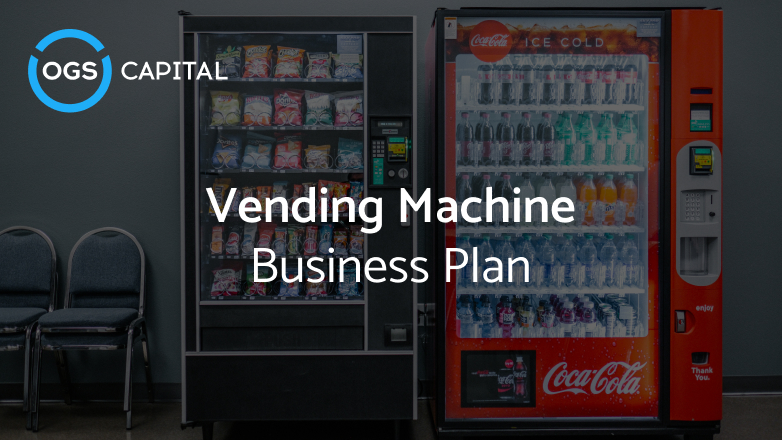Table of Content
Though frequently discounted, solar power furnishes a formidable yet frequently disregarded sustainable energy origin. As the globe seeks environmentally amenable resolutions, solar energy progressively materializes as a plausible renewable electricity basis notwithstanding historical obstacles. When thinking about putting solar panels on a business, an important step is doing a Solar Energy Feasibility Study.
https://www.youtube.com/watch?v=U8y67PefifM
Today in 2023, solar systems cost $17,430-$23,870 on average. The typical price per watt is $1.45. That’s a hefty investment. But solar can save businesses money over time. A feasibility study helps companies ascertain if solar works for their needs. It also ensures the investment aligns with their goals.
What is a Solar Energy Feasibility Study?
Studying whether solar power operates in an area helps people decide sagaciously. A solar energy farm feasibility study meticulously analyzes potential. It confers useful insights. With early warnings of problems, risks and costs diminish. The Solar Energy Feasibility Study Report PDF can also help construct an efficacious business model. And it can identify funding sources. Studies adjust to fit small or large solar projects.
After a development feasibility study, there is information to decide next steps. The study collects local details. These create a business plan for a Solar Panel Manufacturing Plant Business Plan or Solar Energy Farm Business Plan.
Feasibility Study Prepared by Real Experts
Feasibility Study Prepared by Real Experts
Alex Silensky has expertise. He was a director at a Big-4 accounting firm. Now he co-owns OGSCapital. It is a top business consulting company. He knows business plans and mergers well. At OGSCapital, he leads adept pros. OGSCapital ranked best in 2020 and 2022. They have over 15 years under their belt. And they’ve helped over 5,000 clients get $2.7 billion in funding. That colossal experience makes them great at feasibility studies.
What is the Importance of Solar Energy Feasibility Study?
The executability appraisals requisite for strategizing, engineering, and constructing solar energy harvesters critically ascertain perils and advantages endemic to a venue. Concomitantly, they delineate a pragmatic trajectory.
Solar energy feasibility studies in the US help:
- Organization:
- Assesses the technical and financial feasibility of the solar energy project
- Determines the potential energy generation capacity, cost savings, and return on investment
- Identify any challenges or risks associated with the project
- Helps in making informed decisions regarding project implementation
- Investors:
- Evaluates the profitability and financial feasibility of investing in the solar energy project
- Assesses the potential risks and returns on investment
- Provides information for investment decision-making and securing financing
- Regulatory:
- Ensures compliance with regulations and guidelines related to renewable energy
- Assesses the environmental impact, land use, and permits required for the project
- Reviews the solar panel feasibility study to determine if the project aligns with energy and environmental policies
Fun Fact:
Did You Know?
The Solar Energy Industries Association says over 4 million solar systems are installed in the US. Together they make about 5% of electricity here. Total solar capacity is 142.3 GW. That powers about 25 million homes nationwide.
What is Included in a Solar Energy Feasibility Study?
A solar energy feasibility study PPT provides businesses with the information they need to analyze the potential of a solar energy project. A standard solar energy feasibility study PDF typically includes the following components:
1. Location Assessment
It is important to carefully select a site for a solar energy farm. Site assessment may include evaluating the land’s solar radiation levels, topography, and soil type. A solar installation expert will also thoroughly evaluate the building’s rooftop for suitability. The expert will consider factors such as geographic location, orientation (facing south is ideal for maximum sunlight exposure), available space, and potential shading from nearby buildings or trees.
2. Cost-Benefit Analysis (CBA)
Compare total costs to expected benefits. Costs include equipment, labor, permits, taxes, financing, maintenance. Benefits are energy production, savings, revenue, payback time.
3. Technology Selection
To elect the optimal solar power system for the site and project, contrast various solar technologies, such as crystalline silicon, thin-film, and concentrated photovoltaic (CPV). The feasibility study report evaluates these technologies based on efficiency, performance, durability, cost, maintenance, warranty, and aesthetics and advises the most befitting one.
4. Environmental and Regulatory Compliance
Assess environmental and social impacts, legal and regulatory needs. Look at carbon reduction, land use, wildlife/habitat impact. Ensure compliance with environment rules and permits.
5. Risk Analysis
Identify and assess project risks to aid early planning. This can save costs and reduce failure later. Key risks include:
- Technical risks – Problems with the design, installation, or operation of the solar energy system.
- Financial risks – Changes in the cost of solar panels or other equipment, or changes in the availability of financing.
- Regulatory risks – Changes in government regulations or other political factors that could impact the project.
- Environmental risks – Damage to the environment caused by the construction or operation of the solar energy system.
Feasibility Study Guide for Choosing a Solar Energy Farm Location
The place of a solar energy farm is very important for its success. Some important things to think about when choosing the place are:
- Sunlight that reaches a site
- Land available for a solar farm
- Zoning and permitting requirements for a solar farm in a particular location
- Connecting a solar farm to the electrical grid
- Environmental impacts of a solar farm
All these things together change how well the solar energy farm works, how much power it makes, how much it costs, and how it impacts the environment. Different ways of comparing places are used, such as AHP, ANP, TOPSIS, ELECTRE, PROMETHEE, or VIKOR.
Solar Energy Feasibility Study by OGSCapital – Maximizing Sustainability and Cost Savings
At OGSCapital, we are a cadre of adroit business consultants who expedite businesses to prosper in today’s pitiless market. We tender a wide gamut of services, comprising concocting business plans, feasibility studies, and private placement memorandums.
Why Entrust Us?
Our cohort of feasibility study consultants flaunts a corroborated track record of victory. We have empowered hundreds of businesses to devise and actualize successful feasibility studies. We are ardent to dispensing first-rate feasibility studies that gratify the needs of our clients.
How Can We Assist?
We can facilitate you with every phase of the feasibility study process, from scrutiny and appraisal to penning and finalization. We will collaborate with you to discern your business goals and objectives, and concoct a feasibility study that accords with your needs. We will also proffer you with ceaseless support and counsel throughout the process.
Solar Energy Feasibility Study Preparation Methodology
We prepare each feasibility study report from the ground up, amalgamating market research and data analysis. We assess a solar power farm’s economic, financial, legal, and environmental feasibility.
Below are some tasks we use for testing the critical feasibility criteria:
- Market Research – Analyzing the demand, supply, competition, and opportunities for solar power in the target location and region.
- Financials Calculations – Estimating the capital expenditure, operational expenditure, revenue streams, cash flow, profitability, and sensitivity analysis.
- Financial Report review.
- Risk Assessment – Identifying potential risks or issues during or after installation and proposing mitigation measures.
- Final Report – Includes executive summary, introduction, methodology, results, discussion, conclusion, and supporting documents (charts, tables, photos, calculations, references, and sources).
This methodology ensures our feasibility study is thorough, accurate, and persuasive.
Cost of Solar Energy Feasibility Study
Many businesses ask us, “How much does a solar feasibility study cost?” At OGSCapital, we understand that cost is a top priority for businesses when considering professional consulting services. The price of a solar energy feasibility study by OGSCapital will vary depending on the size and complexity of your project. We are dedicated to delivering value to our clients, and our pricing structure is devised to be lucid and competitive.
To obtain a customized estimate for your feasibility study, please reach out to our team. Our consultants will be delighted to converse about your project in depth, comprehend your needs, and furnish a bespoke proposition that conforms to your budget.
Frequently Asked Questions
1. What is the feasibility study of solar energy?
A solar feasibility study is a crucial prerequisite for establishing a solar energy farm. It ascertains whether a solar energy system is technically and financially viable for a specific location. This can avert expensive blunders and guarantee that the system is suitably devised and implemented.
2. What is the limitation of a solar feasibility study?
The constraints of a solar photovoltaic feasibility study encompass data availability, the precision of suppositions, and the analyst’s proficiency.
3. Are solar farm feasibility studies necessary?
A look at whether solar power could work in a housing area can help figure out possible problems and issues, making backup plans, and judging if the idea could happen and where money for it might come from.
OGSCapital’s team has assisted thousands of entrepreneurs with top-rate business plan development, consultancy and analysis. They’ve helped thousands of SME owners secure more than $1.5 billion in funding, and they can do the same for you.



















